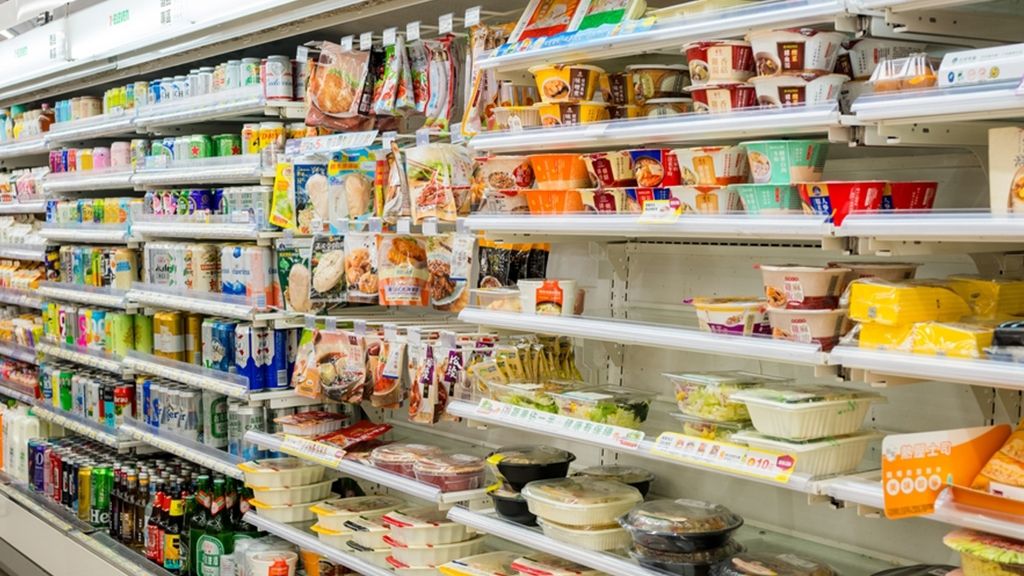At the dawn of the Year of the Snake, China’s consumer and capital markets have regained their long-lost vibrancy: Ne Zha 2 has grossed over 10 billion globally, securing the top spot in animated film box office history, while MIXUE Ice Cream & Tea shattered the “curse” of underperforming innovation tea brands in the stock market, surging over 40% on its first trading day and reaching a market value of over 100 billion yuan.
In just a few years, China's consumer market has swung from boom to bust and now back to recovery, shifting like an ever-changing climate. But behind these unpredictable consumer trends, what truly drives consumption?
In our view, brands may rise and fall, but consumer never sleeps.
Today, the core narrative of China’s consumer sector remains the explosive surge in demand. Emerging brands and products are continuously creating fresh consumer needs. Everyone is looking forward to a better future—whether it's the redesign of trash bags and tissues or the advancements in new energy vehicles and household robots. Consumer innovation is relentless, constantly driving improvements in quality of life.
This process inevitably involves cycles of elimination. Many brands and products fail to sustain success, and some even disappear altogether. However, this phenomenon is tied to shifts in industries and consumer demand—it does not signal a decline in consumption itself.
The true answer to China’s consumer sector lies in innovation on the supply side. While recent years have seen dazzling consumer innovations, severe homogenization remains a challenge. Genuinely original and high-quality consumer innovations are still in short supply.
The unmet consumer desires of today present the best starting points for entrepreneurial innovation. We are witnessing groundbreaking brands rewriting history—not only providing Chinese consumers with better choices but also paving the way for Chinese consumer goods to expand globally.
At this very moment, AI is ushering in a new wave of productivity revolution, reshaping the relationship between production and consumption, and unlocking boundless imagination for the consumer market. As a dedicated investment institution in consumer markets, GenBridge Capital is eager to embark on this new journey alongside industry pioneers—learning from the past and forging ahead into the future.
Is consumer innovation in China truly sufficient?
In the daily lives of Chinese consumers, an interesting paradox exists: whether shopping online or offline, the sheer number of choices available seems abundant. However, despite this vast array of products, they often fail to fully ignite consumers’ desire to buy. While budget constraints are an undeniable factor, another key reason is that product innovation remains insufficient.
Take the beverage industry as an example. According to Nielsen, after more than 40 years of development, China’s beverage market has expanded to 11 major categories and 65 subcategories. As consumer trends rapidly evolve, competition among beverage brands has become increasingly intense. In 2024 alone, the trending category of traditional Chinese wellness drinks saw over 243 new product launches.
However, when compared to Japan’s convenience stores and supermarkets, China’s product innovation still seems to fall short. Many Chinese tourists to Japan find themselves mesmerized by the dazzling variety of products on store shelves. “Regional exclusives” and “seasonal limited editions” are strategically designed to entice consumers, making it hard to resist spending. Shopping guides for Japanese convenience stores continue to trend on social media, reflecting the allure of Japan’s highly dynamic and innovative consumer market.
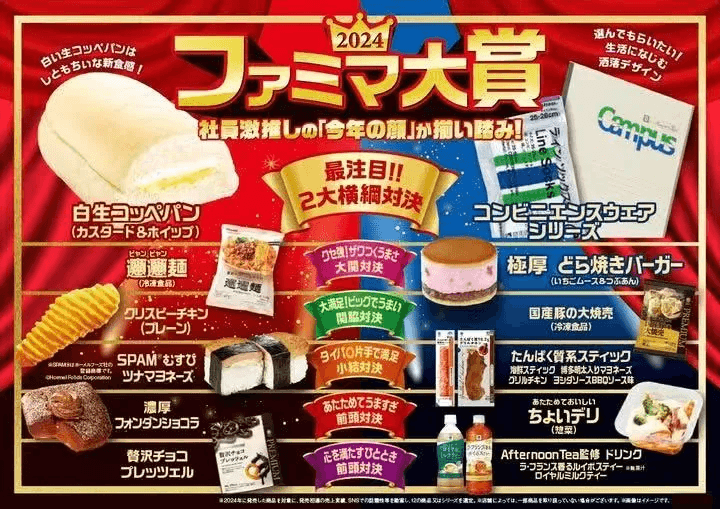
At the core of this phenomenon lies the fact that while Chinese consumers have access to a vast array of products, severe homogenization persists. Many new products are strikingly similar, offering nearly identical flavors, packaging, and overall experience, and ultimately lacking a sense of novelty.
The unmet desires of consumers present the best starting point for innovation and entrepreneurship in the consumer sector.
Take the tea beverage sector as an example. In the past, when people discussed tea drinks, they would typically think of brands like Oriental Leaf, Suntory, Master Kong, and Uni-President. Despite the dominance of these industry giants, a new player like Ripe Fruit has managed to rise rapidly. Some of its products have even broken into the Top 3 in sales, proving that opportunities still exist for emerging brands.
This demonstrates that China’s consumer market is not a monolithic structure, it is constantly evolving and fragmenting. It prompts us to rethink a fundamental question: Has supply truly been sufficient? Previously, we may have assumed that all consumer needs had been met. However, when new products emerge and gain market recognition, we realize that there is still room for further segmentation, allowing for products that cater to more specific demands.
Take Ripe Fruit’s sugar-free tea as an example. The brand differentiated itself through innovations in both bottle design and flavor, which played a crucial role in its success.
For instance, it introduced a pioneering square-shaped bottle design, which not only offers a better grip but also allows consumers to see the product clearly. This was a key insight uncovered through user research—consumers were willing to pay for this feature. In today’s social media-driven world, aesthetics matter. The visually appealing design encourages consumers to share photos of the product online, amplifying its reach and appeal.
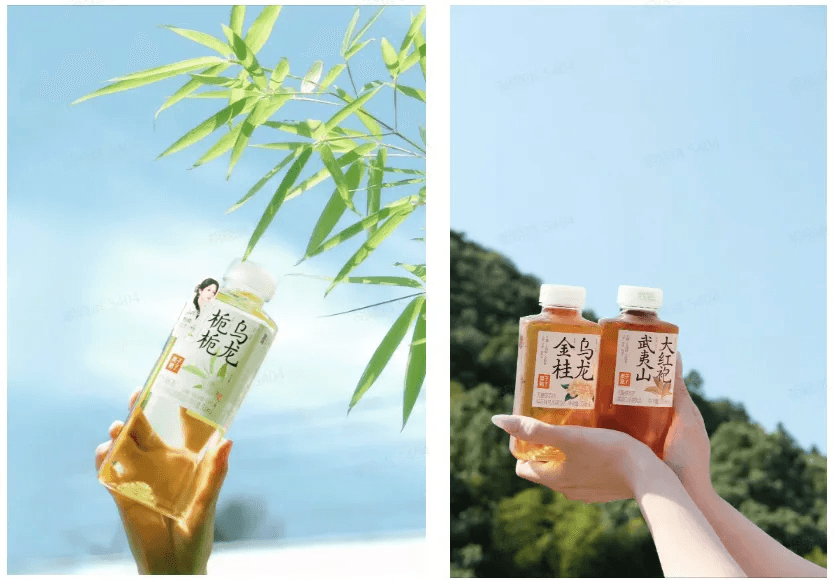
A beautiful appearance alone is not enough—the taste of the product is just as crucial. Only when a beverage offers an excellent taste can it truly win over consumers. Take Oriental Leaf and Suntory, for example. When people think of Suntory, the first word that often comes to mind is “bitter” because of its high tea extract content. Similar to an "Americano" in the world of coffee, its tea can be directly extracted and consumed, giving it a pure and authentic tea flavor that many tea enthusiasts appreciate.
However, just as not everyone enjoys an Americano, some younger consumers prefer a less bitter tea. This presents an opportunity for flavored teas—adjusting the taste by blending original tea leaves with other ingredients. For instance, combinations like chrysanthemum pu-erh, bamboo-scented oolong, and jasmine tea make the flavor profile smoother and slightly sweeter. At the same time, when innovating on taste, Ripe Fruit balances the natural bitterness and astringency of tea by using healthier sweeteners while preserving the essence of the tea itself. This combination of great taste and health-conscious ingredients has significantly increased its appeal among younger consumers.
China’s consumer market is embracing a global opportunity
The global beverage market is constantly introducing new flavors. Beyond classic colas, there has been a surge in innovative carbonated drink combinations. Yet, despite all the variations, universally popular flavors—such as apple-flavored and orange-flavored sodas—continue to dominate the market, as seen by brands like Fanta, Arctic Ocean Soda, and Sprite.
However, in China, we have not only these classic flavors but also a wave of emerging brands actively experimenting with localized innovations. More importantly, China’s product innovation may hold the potential to become a global opportunity.
Take coffee as an example. Italian-style espresso is the foundation of modern coffee culture, but over time, it has evolved into new classics like Americano, latte, and cappuccino, shaping the initial impression many Chinese consumers have of Western coffee culture.
In China, the spread of coffee culture has gone through several stages. Starbucks, for instance, has spent over 20 years educating and cultivating Chinese consumers, establishing more than 7,000 stores and helping many develop a coffee-drinking habit.
But why, then, did a brand like Luckin Coffee emerge and, in just three to four years, open 20,000 stores, surpassing Starbucks in China? This raises an intriguing question: Is Luckin Coffee simply doing what Starbucks did—just at five times the speed?
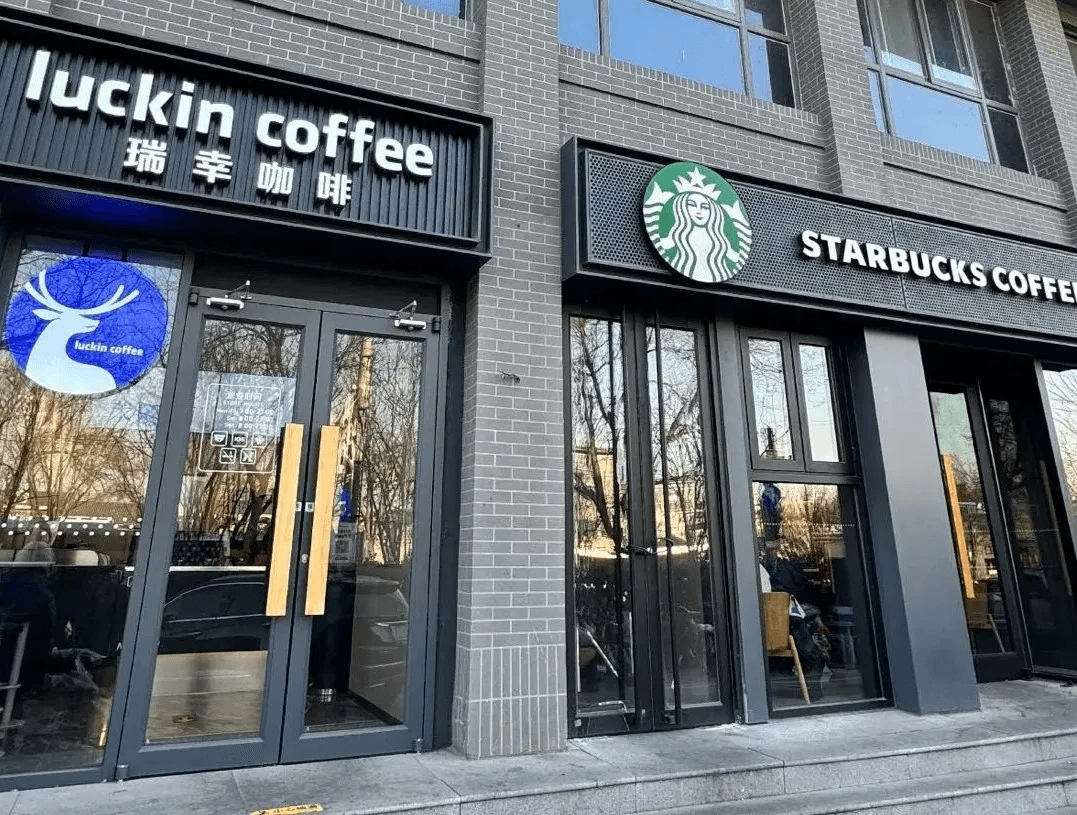
Not exactly. Luckin Coffee achieved this 5x to 10x acceleration not by simply copying Starbucks but by adopting a different product strategy and business model. To sum it up in one sentence:"Luckin is a company that specializes in flavored lattes."
First, Luckin specializes in lattes. Lattes are arguably the most widely accepted coffee type among Chinese consumers, largely due to their high milk content. In recent years, China has developed a market even larger than coffee—milk tea. In many ways, lattes can be seen as a fusion of coffee and milk tea, where milk blends with tea polyphenols, similar to how it blends with coffee.
This evolution is fascinating. Italians prefer espresso, and across Europe, coffee is traditionally consumed in a similar way. In the 1980s, Howard Schultz introduced watered-down and milk-based variations to make coffee more accessible to Americans. In China, however, we’ve taken it a step further—increasing the milk ratio even more to suit local tastes. Not only that, but we’ve also infused coffee with flavors like coconut, bubble tea, and even brown sugar, creating entirely new coffee experiences.
One of Luckin’s most groundbreaking innovations was the launch of its Raw Coconut Latte. Traditionally, Western coffee is mixed with dairy milk, but in recent years, plant-based milk alternatives like Oatly have gained popularity. Luckin took this one step further, boldly replacing milk with coconut milk.
The success of coconut lattes can be attributed to three key factors. First, higher fat content – coconut milk has three times the fat of regular milk, making the coffee creamier, thicker, and more visually appealing in the cup. Second, lower protein content – this prevents unwanted curdling and enhances the drink’s smoothness. Third, natural coconut aroma – the subtle, tropical fragrance of coconut adds a unique and enjoyable flavor profile. As a result, this distinctively Chinese innovation was an instant hit, selling over 100 million cups and quickly becoming a signature product. Luckin has since doubled down on coconut-based drinks, continuously experimenting with new flavors and expanding its product line.
Innovations like the Raw Coconut Latte have played a crucial role in reshaping China’s coffee culture. By introducing localized, innovative flavors, Luckin has significantly accelerated consumer adoption of coffee, bridging the gap between traditional Chinese beverage preferences and modern coffee trends.
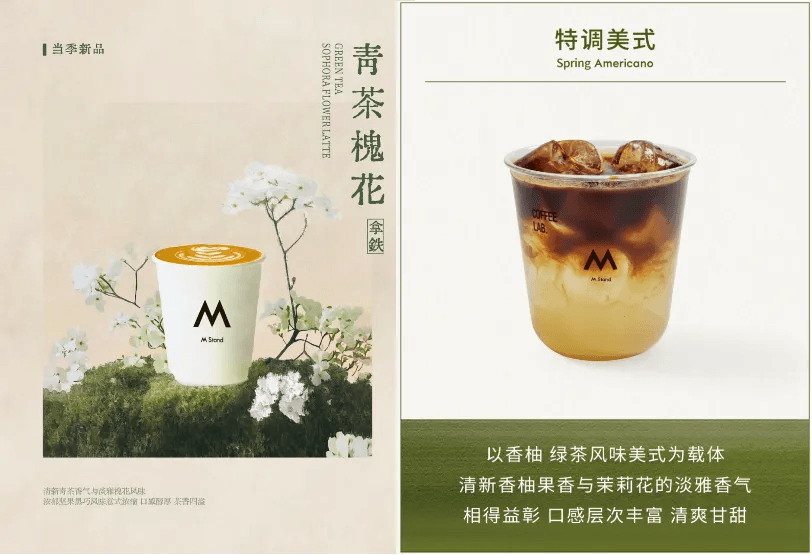
Let's consider an alternative scenario: if China’s coffee market had followed a more traditional development path, it might have taken much longer to gain widespread popularity.
Humans develop food preferences and memories over long periods of evolution, and tastes tend to have a certain continuity. For instance, Beijing locals have a unique fondness for "douzhi" (fermented mung bean drink), and every region has its own distinctive flavors. At the same time, people are naturally curious and open to trying new tastes. However, this process of exploring new flavors involves a natural selection mechanism—much like how brands like Coca-Cola weren’t instantly accepted by everyone but emerged victorious from a competitive landscape.
China is experiencing a wave of rapid innovation across many industries, introducing new products and flavors at an unprecedented pace. Unlike the common belief that Chinese consumers are rigidly attached to specific tastes, they actually carefully experiment with new products. Once they try something and find it aligns with their preferences, they gradually adopt and embrace it. This is a "gold panning" process—only products that survive market selection will remain in the long run.
As a result, China is undergoing a massive wave of innovation, with certain sectors already leading on a global scale.
Take coffee and milk tea consumption as an example. Chinese consumers are no longer just learning from foreign influences—they are now driving their own innovations. In the past, Taiwanese brands like Coco, Yidiandian Milk Tea, and Gong Cha introduced milk tea culture to the mainland, using ingredients like non-dairy creamer and taro balls. But today, China’s milk tea industry has evolved to a point where it is now shaping global trends, setting even higher industry standards that are influencing markets worldwide.
This innovation isn’t limited to the food and beverage sector—it extends into other industries like electric vehicles (EVs). China's key breakthroughs in the EV sector demonstrate its readiness to redefine global industry standards.
From a consumer perspective, China has already created many world-class innovations. In the past, many industries were imported from foreign markets, bringing their business models and product paradigms into China. However, over time, China has mastered and refined these industries, developing its own localized innovations and achieving significant advancements.

Take the fast-food industry as an example. Initially, global giants like McDonald’s and KFC entered China, introducing consumers to the idea of eating fried chicken and hamburgers. However, Chinese companies soon began adapting these products to local tastes. The first step was customizing flavors to better suit Chinese palates.
Next came price and sales model adjustments. While a McDonald’s or KFC meal might cost 25 RMB, Chinese businesses explored offering similar fast-food options at 10 or 15 RMB, making them more accessible to a wider audience while still establishing strong local brands.
McDonald’s and KFC pioneered the fast-food chain model, using streamlined menus and standardized operations to scale their businesses efficiently. Chinese companies have since adopted and refined this approach, applying it to traditional Chinese cuisine. For example, Lanzhou hand-pulled noodles have been transformed into a nationwide chain business, leveraging food standardization to ensure quality, boost efficiency, and reduce costs, while using operational standardization to rapidly expand store networks.
Over time, China has internalized the McDonald's and KFC model, adapting it to its own unique version. First, we consumed McDonald's and KFC. Then, we created our own Chinese versions of McDonald's and KFC. Now, we are using their business concepts to enhance our own cuisine.For example, Chinese-style hamburgers like “Roujiamo” have gained popularity as a local alternative to Western burgers, while pizza-inspired innovations have emerged using Chinese-style pancakes and wraps.
China is now combining its rich culinary heritage with advanced Western business strategies, turning traditional foods into globally competitive business models. This transformation is happening on a massive scale, driving a wave of consumer innovation that is reshaping the global food industry.
Brands come and go, but consumer sector never sleeps.
Today, the core of China’s consumer market lies in the explosive growth of demand. Emerging brands and products are continuously creating fresh desires. Everyone looks forward to a future of ever-improving living standards—whether it’s small innovations like redesigned trash bags or major advancements like new energy vehicles and household robots. Consumer innovation is ceaseless, constantly driving the elevation of quality of life.
This process inevitably involves turnover. Many brands and products don’t sustain their success; some even disappear. This phenomenon is tied to shifts in industries and consumer demand, but it doesn’t mean demand is vanishing or that consumption is declining.
First, a vast amount of innovation undergoes a process of natural selection. Take the cosmetics industry, for example. In recent years, the market has been flooded with new products, delighting consumers. From eyeliners and brow pencils to lipsticks, innovations in colors, packaging, and celebrity endorsements never stop. Yet, in the end, consumers can only carry a few staple items in their bags, often favoring classic shades they love. So, even if a hundred players innovate, only a handful may endure. New products keep emerging, but they also face ruthless elimination.
Second, the speed at which products are promoted and popularized has accelerated. In the past, it might have taken years or even a decade for a product to reach its entire target audience. But now, thanks to platforms and algorithms, many products can spread rapidly within just one or two years. This speed compresses product life cycles dramatically.
Take the latte coffee flavor as an example—it sold 700 million cups in just three years, a feat made possible by the lightning-fast transmission speed of the entire market. For a single product to achieve such results in such a short time is likely unprecedented in the history of beverage companies.
In the past, the ideal product life cycle was akin to Coca-Cola’s, summed up by the phrase, “A diamond is forever.” The hope was that once a product launched, it would stabilize over time. But in China today, many products don’t follow this model.
Even brands like Luckin Coffee, after launching hits like “Coconut Latte,” must iterate at a breakneck pace—releasing a new product nearly every three days. Meanwhile, new products and brands keep emerging, layering together to form a diverse consumer landscape where each product caters to its own niche audience, further fragmenting preferences.
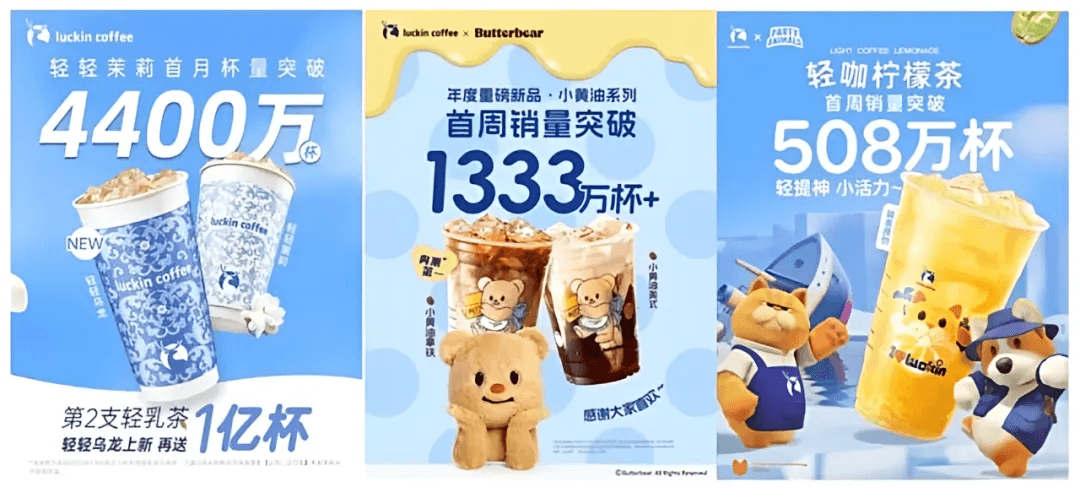
Everyone is scrambling to launch new products and compete on efficiency, as if passively swept into a high-speed machine. In such an era of rapid obsolescence, does long-term competitive advantage no longer exist?
The answer is no.
First, Why do some consumer brands struggle to endure?
The answer may lie in the fact that most players focus on demand-side changes while few invest in building industrial barriers. Take the cosmetics sector as an example, nearly all innovations revolve around three aspects:
- Color innovation: For instance, lipsticks can play with endless shades to cater to diverse consumer preferences.
- Packaging innovation: Traditional Chinese aesthetics, slim-heel designs, square tubes—anything to catch the consumer’s eye.
- Pricing innovation: When consumers buy Tom Ford or Chanel, they may pay a premium dozens of times the cost. A new brand pricing its product at just 10x cost suddenly becomes highly attractive.
In recent years, competition in consumer goods initially revolved around these obvious areas. But this level of innovation is easily replicated, eventually forcing everyone into cutthroat rivalry and price wars.
Today, we’ve come to realize that all competition ultimately boils down to cost structures and industrial capabilities. Even in the heated battle of AI large models, you’ll find that DeepSeek, once a niche player, broke through by leveraging low-cost open-source strategies.
Technological iteration will undoubtedly fuel endless possibilities for consumer industry. In the past, the shift from PCs to mobile devices saw countless consumer companies rise and fall. Big data and algorithms have dramatically boosted efficiency in production and distribution, reshaping retail—hypermarkets declined, while discount stores, specialty shops, and convenience stores flourished.
There’s no doubt that China’s manufacturing prowess is unmatched globally. What’s often overlooked, however, is that our ability to make people spend is equally unparalleled.
As a vast and stratified market by nature, China provides the perfect breeding ground for consumer innovation.
We firmly believe that new supply will continually spawn new demand, and new demand, in turn, will feed the formation of new supply. Human nature and desire will perpetually drive consumer sector forward in an endless cycle. In this process, capital as a means of production, can accelerate progress, consolidate industries, reduce competition and inefficiency, and ultimately enhance productivity.
As a dedicated consumer investment firm, GenBridge Capital is committed to partnering with industry peers to reflect on the path taken and embark on a new journey.


